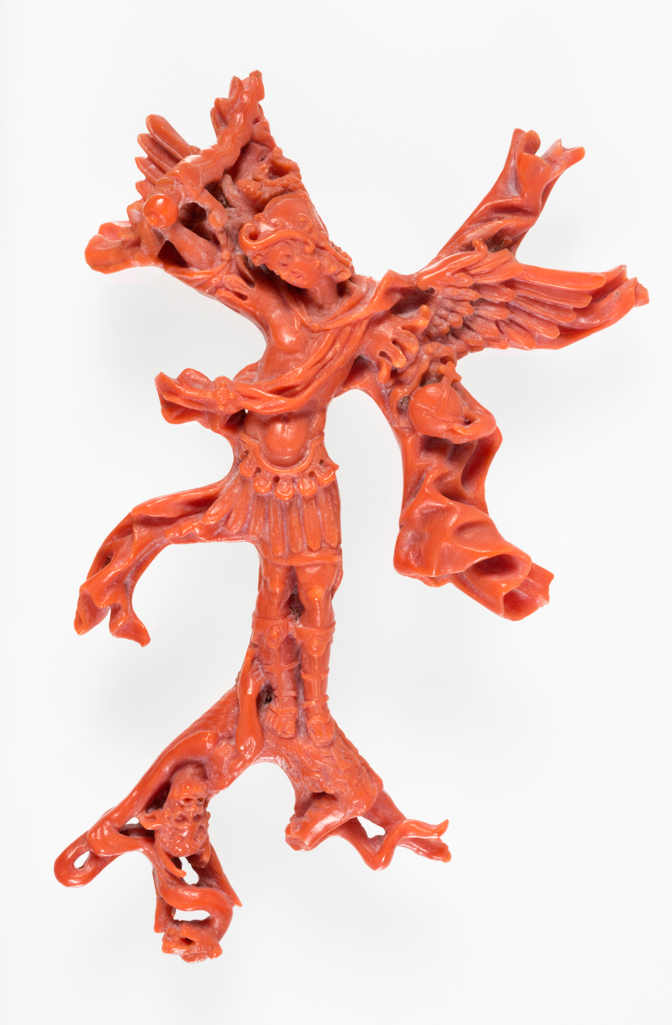SS Geminianus, Augustine and Michael
Were it not for the faded inscription beneath his picture, it would be difficult for us to put a name to the figure of St Geminianus in Simone’s panel, detail left. He has the halo of a saint and the traditional attributes of a bishop – the mitre and crozier – but that only helps us so far. There are many such bishop saints celebrated in the Christian calendar. And many of these, like Geminianus here, also carry books. With St Augustine, right, the identification is only a little easier, once we recognise that he wears the black Augustinian habit.
The figure of St Michael, however, needs no label. The archangel here faces us equipped with the three symbols that make his identity unmistakeable: his angel’s wings, his sword and his set of scales.
In the Old Testament Book of Daniel, Michael is named as the prince and defender of the chosen people, while in the New Testament Book of Revelation he is the leader of the angelic army, who fights 'the great dragon, that old serpent, called the Devil and Satan (Revelation 12, 9). These literary descriptions gave rise to the image of Michael as a warrior. In art, he is often armed with a lance or sword, wearing armour and usually trampling a dragon beneath his feet.

In a small seventeenth-century carved coral statuette in the Fitzwilliam, above [M.73a-1930], he raises a sword to strike the beast who lies prone before him. From the earliest days, when Christianity first became an offical religion in the Roman empire, Michael was prayed to as a protector and revered as a symbol of the Church Militant.
An illumination from a fifteenth-century French manuscript in the Fitzwilliam [MS.4-1979], shows Michael fighting over the soul of a recently deceased man. He thrusts his lance into the mouth of a black horned devil who emerges from a fiery pit in the ground. The mortal soul flies up towards God the Father, while two other angels reach out their arms to receive it.
Michael not only protected the souls of the dead, he also judged them. He often appears in art as the weigher of souls at the Last Judgment, holding a set of scales. In Christian belief, the Last Judgment will take place when Christ returns to earth and consigns both the living and the dead to either Heaven or Hell. In the words of St Matthew, 25, 31–3: 'The Son of Man will separate men into two groups, as a shepherd separates the sheep from the goats, and he will place the sheep on his right hand and the goats on his left.' Michael plays an important part in these proceedings.
In Simone Martini’s panel, the right side of Michael's scales contains a diminutive figure representing a deceased human soul. Often in judgment scenes, two such figures are shown, one in each pan of the scales. The heavier, lower one represents the sinner who is condemned to Hell. Only one pan can be seen in Martini’s picture, but as this soul is clearly lighter than whatever weighs down the other side, he seems to have been judged worthy to join the elect in Heaven. Encouraging news for the patron of this painting, if indeed, as has been suggested, the figure represents him.
Other highlight objects you might like
Other pathways and stories you might like
Sign up to our emails
Be the first to hear about our news, exhibitions, events and more…






